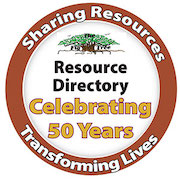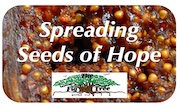Whitworth professor’s book delves into religious activists as ‘outsiders’
 |
| Dale Soden intersects history of liberal and conservative religious activists in the Northwest. |
From his interest in the Northwest and religion in the region, Whitworth history professor Dale Soden did 20 years of research for his recent book, Outsiders in a Promised Land: Religious Activists in Pacific Northwest History.
In his 30 years at Whitworth, he has taught American history, the Vietnam War, Pacific Northwest history, American popular culture, intellectual history and post Civil War history.
He taught two years while finishing doctoral studies at the University of Washington in 1980 after undergraduate studies at Pacific Lutheran University. He taught five years at Oklahoma Baptist University before coming to Whitworth in 1985.
Dale wrote on religion and public life in the Northwest in his first book, a biography of The Rev. Mark Matthews: An Activist in the Progressive Era in Seattle (from 1902 to 1940). Other books include a history of Whitworth, An Enduring Venture of Mind and Heart, and Historic Photos of Washington State.
“People normally talk of the Northwest as the most secular region in the United States—the ‘None Zone.’ Early Pacific Northwest history has focused on entrepreneurs, explorers, miners, loggers and politicians. Many often spent time in saloons, gambling halls and brothels,” he said.
“Except for missionaries, we hear little of religious people helping shape the culture,” said Dale, a member of St. Mark’s Lutheran Church in Spokane, “but Protestants, Catholics and Jews worked together to provide social institutions.
“In spite of the Northwest being the least churched region, religious activists were more important than previously understood,” he said. “Both progressives and conservatives in Oregon and Washington were outsiders and considered themselves to be outsiders to the prevailing culture.”
Dale found that from the late 1800s to the 1930s, religious activists sought to protect women and children. They established schools, orphanages, rescue homes, YMCAs and YWCAs, and fought for prohibition and regulation of child labor.
During and after the Depression, activists began to advocate for unemployment insurance, education, public assistance and a minimum wage.
In the mid-20th century, progressive and liberal Protestants, Catholics and Jews advocated for civil rights of African Americans and Japanese Americans. Religious conservatives were wary about communism, labor unions and secularism in public schools.
Dale said the divisions grew to a “full-blown culture war” in the 1970s, reacting to radical feminism and public acceptance of abortion and homosexuality.
The second half of the book explores the emerging debate by the middle class on whether conservative or liberal social values should prevail.
For conservatives, the values are family, patriotism and capitalism.
For liberals—as individuals, denominations and ecumenical organizations—advocacy for the poor, marginalized, and racial and ethnic minorities was central.
“In the present, we see the clash of cultures between conservative social activists, who oppose tolerance of gays and abortion, and liberal/progressive social activists, who advocate against war and for the environment, justice for the poor and gay rights,” said Dale.
Religious activists reflect the divide in the political system, said Dale, whose interest in religious activists began in his undergraduate years in the 1970s, when civil rights struggles, the anti-war movement and environmental issues led to heated debates among people of faith.
Dale learned that:
• There are more examples of religious activism of greater breadth and depth than he anticipated.
• A Methodist minister resisted the internment of Japanese Americans.
• Some Protestant ministers were in the Klu Klux Klan in the 1920s.
• The current cultural war between liberals and conservatives has longer and deeper roots than he realized. It began before the 1970s conflicts between the Moral Majority and Focus on the Family on one side and feminism and advocacy for the marginalized, poor and gays on the other side. The conservative-liberal split went back to the 1930s and 1940s.
Dale also learned:
• about many women involved in religious activism on behalf of various causes;
• about the role of religious activism in the 1960s Civil Rights movement in Portland and Seattle, and
• about the role of ecumenical organizations—councils of churches in Portland and Seattle, Ecumenical Ministries of Oregon and the Washington Association of Churches—now the Faith Action Network.
“Ecumenism was an important feature, beginning early in the century with Protestant churches organizing around issues for social change and justice—such as improving conditions of the working class; challenging behaviors like alcoholism, prostitution and gambling; promoting peace activism; developing environmental statements, and reconciling with Native Americans and non-Christians.”
Evangelical groups like Promise Keepers, Focus on the Family and branches of the National Association of Evangelicals also included advocacy, he said.
“Catholics were involved in ecumenical organizations, then dropped out of them and recently have been involved again. Through the 1960s, they were active with, although not necessarily formally tied to, Protestant ecumenical organizations,” he said. “Their contribution to social activism has been in advocacy for the poor and on peace issues, as well as opposing Communism and abortion. Catholic bishops have been active on environmental issues.”
The book includes the Jewish community’s advocacy for social justice.
“In the early 20th century, rabbis were socially active along with Protestant pastors and Catholic priests. They opposed child labor and advocated for providing services for the poor,” Dale said. “In the middle of the century, Jewish organizations, especially of the Reform tradition, advocated for social justice for marginalized groups.”
A chapter looks at African Americans in Portland and Seattle, led by the Rev. Samuel Mc-Kinney and the Rev. John Adams, classmates of the Rev. Martin Luther King Jr. They organized resistance to segregation.
Dale concludes Outsiders in a Promised Land, which was published by Oregon State University Press, with two cautions: 1) liberal/progressive activists may be in danger of being indistinguishable from the prevailing culture of secular peace and environmental activists, and 2) conservatives may be so far outside the culture they are irrelevant.
“The outsider status is important, but people can’t be too outside or inside the culture to influence it,” he said.
Dale also finds that more evangelical churches are now engaged in social issues related to environment, human trafficking and poverty.
“I end with cautious optimism that conservatives and liberals can find more ways to work together,” Dale said, noting that the greatest division today is about how to bring about God’s Kingdom.
In working on the book, he gained greater appreciation for the role of institutions.
“The story continues to unfold. This is not the last word on religious activism in the Northwest,” said Dale, who hopes the book gives a historical framework for understanding the present context.
For information, call 777-4433 or email dsoden@whitworth.edu; or visit Oregon State Press Announcement
Copyright © January 2016 - The Fig Tree






